Responsable WP1

 DemerstEm, DEMERsal ecosySTEMs
DemerstEm, DEMERsal ecosySTEMsOur project is part of the PESCAO program, and aims to improve scientific advice production on shared demersal stock in West Africa (Ecowas Area) .
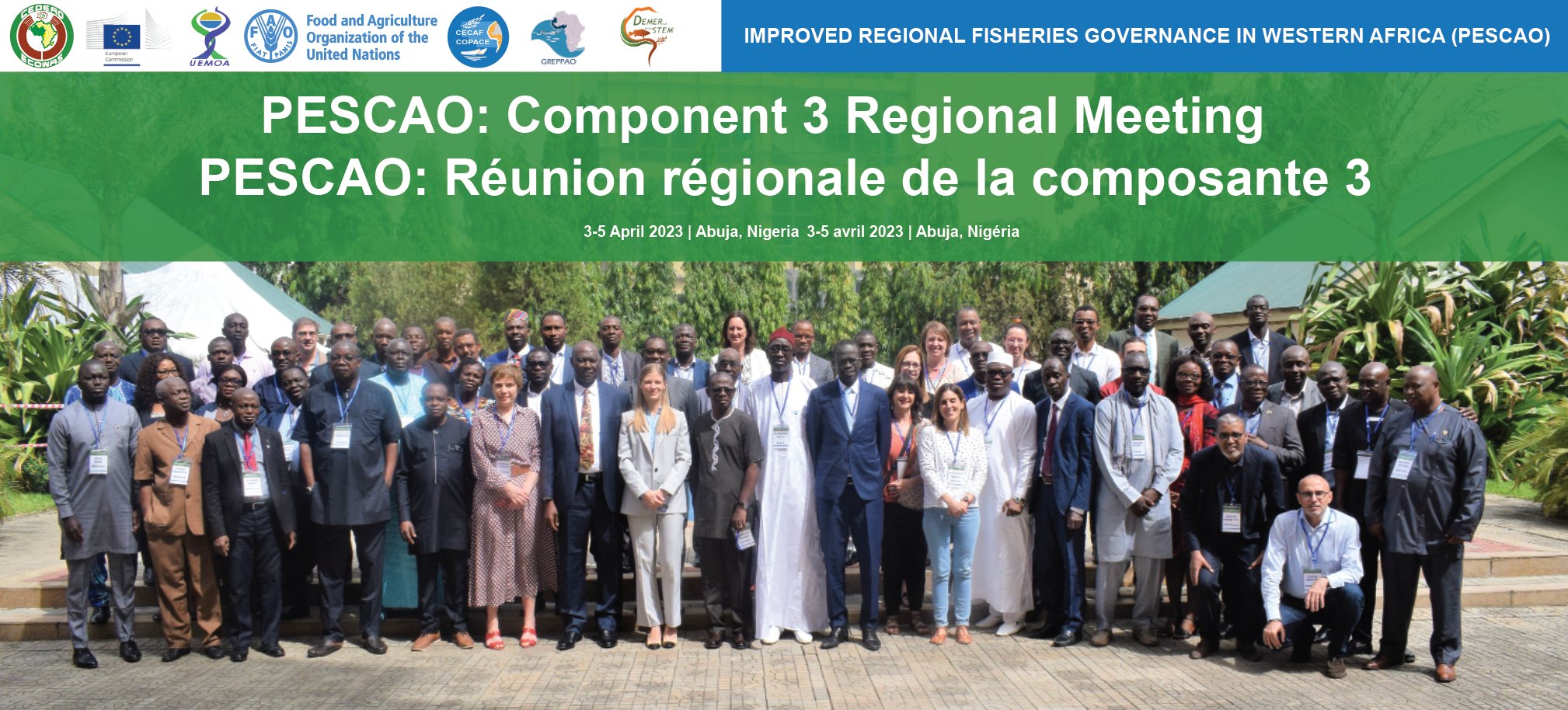
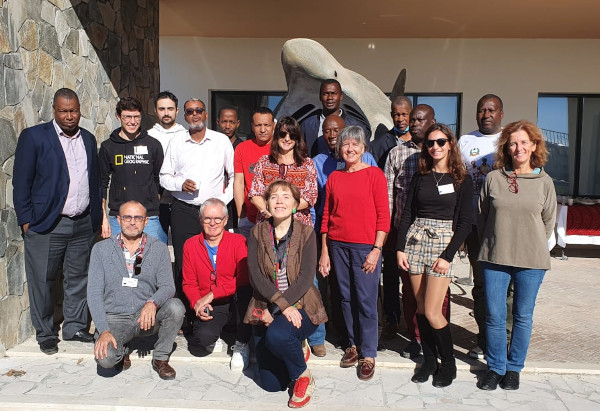 November 2023, The working group 8 dedicate to Ecosystem Approach
was initiate by the coordination team and hosted by SZN in Naples
All the partners was here to :
November 2023, The working group 8 dedicate to Ecosystem Approach
was initiate by the coordination team and hosted by SZN in Naples
All the partners was here to :
 September 2023 to January 2024 The two colleagues in charge of the sensitive habitat assessment are back in Rennes.
Their objectives is first to finalize 2 scientific article in order to prepare their Phd
September 2023 to January 2024 The two colleagues in charge of the sensitive habitat assessment are back in Rennes.
Their objectives is first to finalize 2 scientific article in order to prepare their Phd
 In order to ensure DEMERSTEM outputs dissemination toward CECAF working groups :
In order to ensure DEMERSTEM outputs dissemination toward CECAF working groups :

 Finally, GREPPAO, DEMERSTEM and CECAF/PESCAO coordinators organised a common final meeting under the umbrella of ECOWAS and EU (April 3rd to 5th) in Abuja (Nigeria).
The agenda was organized to have political discussion during morning session and afternoon session was dedicate to project outputs.
Participant discussion made it possible to draw the future of knowledge to support fisheries managment.
Finally, GREPPAO, DEMERSTEM and CECAF/PESCAO coordinators organised a common final meeting under the umbrella of ECOWAS and EU (April 3rd to 5th) in Abuja (Nigeria).
The agenda was organized to have political discussion during morning session and afternoon session was dedicate to project outputs.
Participant discussion made it possible to draw the future of knowledge to support fisheries managment.

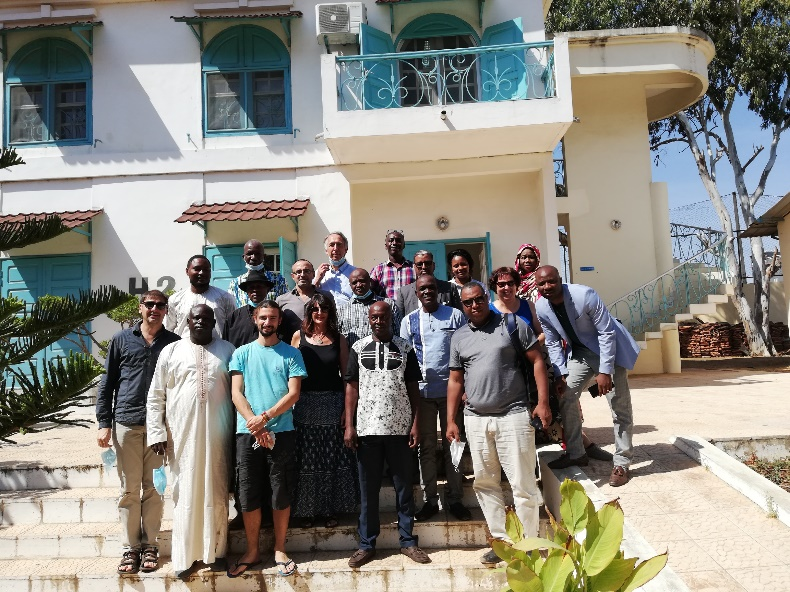 The EU DEMERSTEM project (within the PESCAO grant) started in March 2019. We are on the way of our Year 4 (with a one-year extension of the project)
During this year 2021-2022 we were able to restart physical meetings and we are still trying to recover time lost during the COVID pandemic.
The EU DEMERSTEM project (within the PESCAO grant) started in March 2019. We are on the way of our Year 4 (with a one-year extension of the project)
During this year 2021-2022 we were able to restart physical meetings and we are still trying to recover time lost during the COVID pandemic.
November 2021: The working group 5 was located in Dakar (22th to 26th of November 2021). This meeting was the first physical one since February 2020. We have restarted our pending activities with a normal meeting: stock assessment models’ presentation and training, data gathering, abundance indices calculation using General Linear Models…
GT5 Agenda
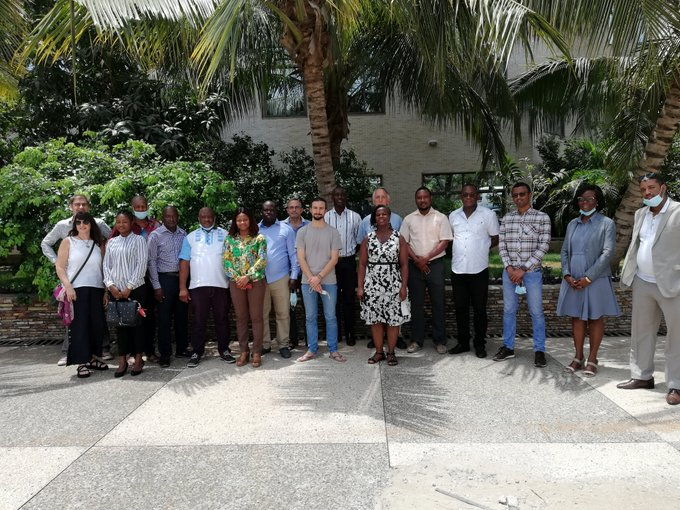
March 2022 : The 6th working group was organized in Téma (Ghana) – 14th to 18th of March 2022. We finalized the abundance indices for three stocks (Epinephelus aeneus for Mauritania-Senegal-Gambia case study, Pagrus caeruleostictus et Pseudotolithus elongatus for Guinea / Bissau Guinea case study).
GT6 Agenda
Time series and reports are available here :
| Stock | Scientific survey | Atisanal fisheries | Industrial fisheries |
Epinephelus aeneus Sénégal-Mauritanie-Gambie :
| 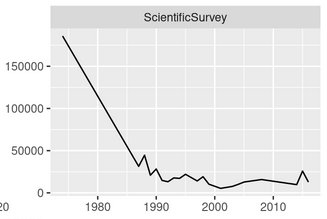  | 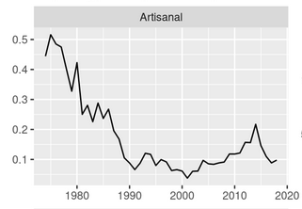 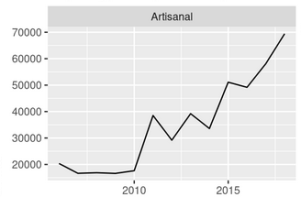 | |
| Trends of abundance indices for Pagrus caeruleostictus – Guinea / Guinea Bissau (Report) | 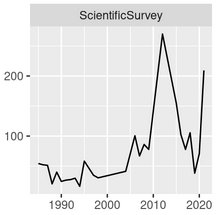 | 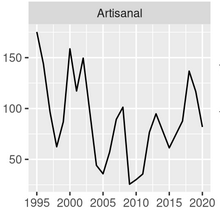 | 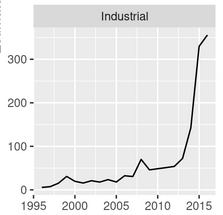 |
| Trends of abundance indices for Pseudotolithus elongatus – Guinea/ Guinea Bissau (Report) |  | 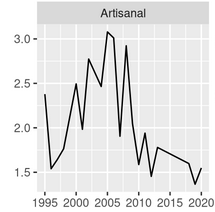 | 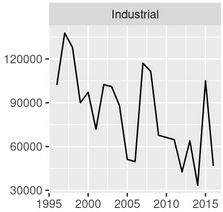 |
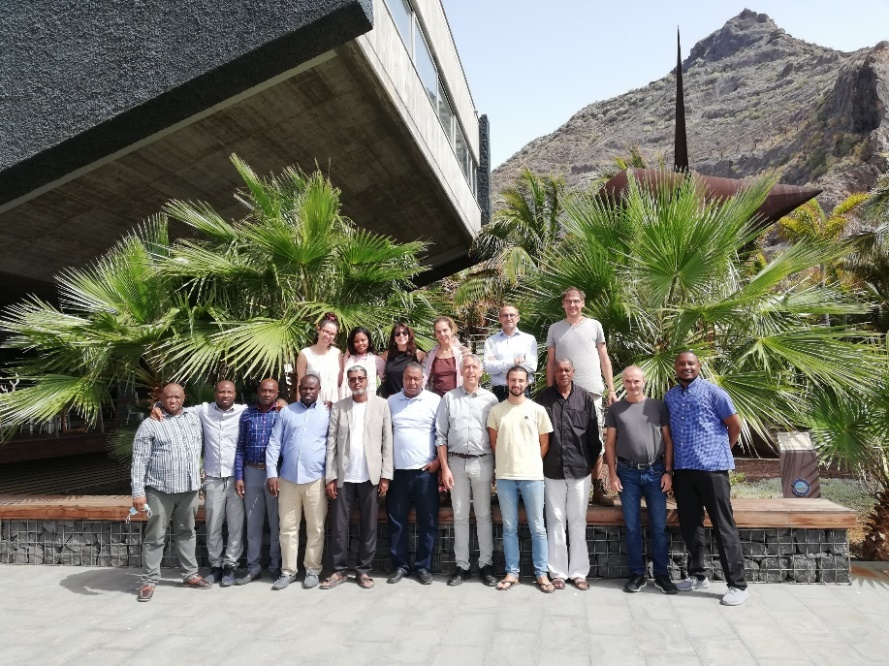
July 2022: Working group 7 was organized in Santa Cruz de Tenerife (Spain), 4th to 8th of July 2022 in IEO-CSIC building. The main objective of the WG was to feed stock assessment models with available data (abundance indices, length frequencies, catches and effort data (Global models, R package DEMERSTEM, JABBA or SPICT for dynamic global model, Pseudo cohort or LBB for size-based models). Reports still need to be finalized.
GT7 Agenda

Momodou Jallow is working at the Fisheries Department of Banjul. We already have included Gambia for data collection through CRODT- especially for Penaeus notialis case study. We have improved this collaboration with the participation of Momodou to our regular working groups on Stock assessment.
Definitively, it’s not easy to jump on the bandwagon but Momodou was really interested in our activities and he could help us with his knowledge on Gambia fisheries.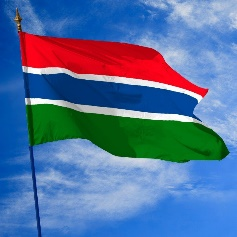
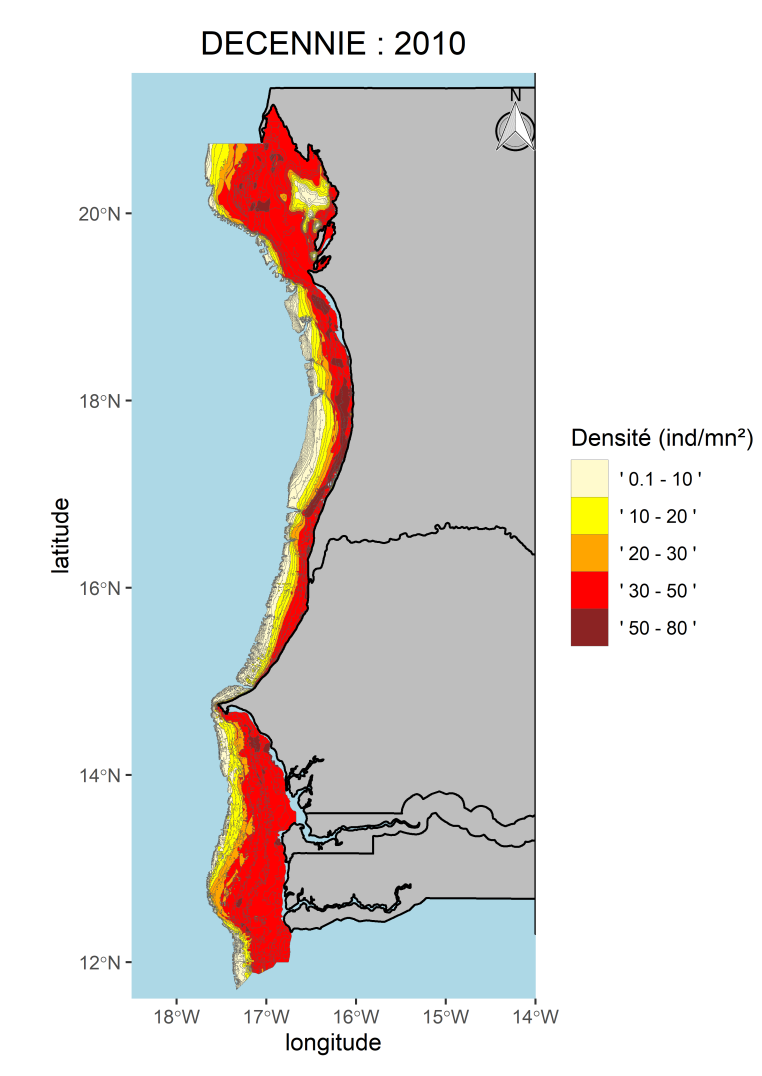
Long training period within DEMERSTEM framework:
In 2021 long training period in Europe for our 3 Phd working on DEMERSTEM activities were back:
• Quenum Crespin Luc for his job on sensitive habitat assessment of Pseudotolithus senegalensis, Pagellus bellottii and Epinephelus aeneus in Ghana-Ivory Coast case study. Co-supervised by Olivier Le Pape from Institut Agro.
• Jeremias Intchama for his Phd proposal in collaboration with Ignacio Sobrino from IEO-Csic Cadix.
• Yeslem El Vally in Rennes – Institut Agro for the sensitive habitat asessment of Epinephelus aeneus and Penaeus notialis - Senegal/Mauritania case study. Co-supervised by Olivier Le Pape from Institut Agro.

WP 1-Stock identification :
IEO-CSIC is in charge of the stock identification DEMERSTEM activity based on multiple (holistic approach) complementary methods.
a- Individual shape analysis (morphometry) is based on distance measure of references points for the selected 6 species (« Truss network »). These measures are done on pictures collected during the Biological Data Collection that was organized using the same protocol in the 6 countries. Measures are already available for 4 species (Epinephelus aeneus, Pagrus caeruleostictus, Pseudotolithus elongatus and Pseudotolithus senegalensis), and will soon be finalized for the 2 remain species (Pagellus bellottii and Penaeus notialis). We will proceed then multivariate analyzes using this data in order to defined if the collected fish pictures could be included in the same stock- The conclusion will help us to define the perimeter of the stock assessment.
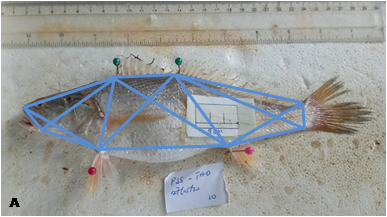 | 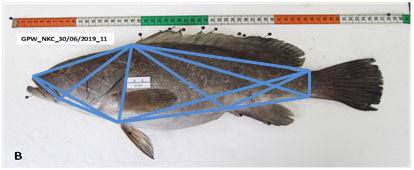 |
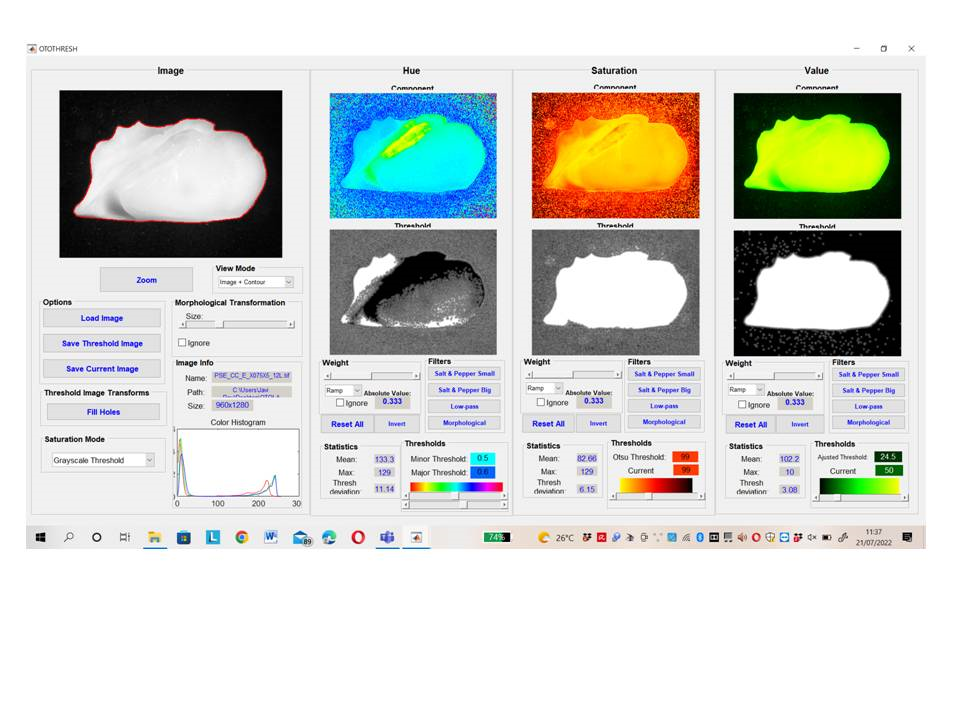 b-During the data collection process, we have also collected otolith. One complementary method used for stock dentification is the otolith shape analysis (morphometry on otolith). It was done on 4 of the 5 selected fish species using the free software developed by IEO-CSIC - Otoloab (http://www.ieo.es/otolab_2019)
b-During the data collection process, we have also collected otolith. One complementary method used for stock dentification is the otolith shape analysis (morphometry on otolith). It was done on 4 of the 5 selected fish species using the free software developed by IEO-CSIC - Otoloab (http://www.ieo.es/otolab_2019)
c-Last method used is the genetic analysis (on Penaeus notialis and Epinephelus aeneus). DNA was extracted for genotype analysis on more than 400 sample of shrimp and 120 samples of White grouper.
We have to mention that the job has been slowed down due to late samples transmission because of the COVID pandemic. However, new scientists, hired by IEO-CSIC for DEMERSTEM, will help us to achieve the stock identification process.

WP 3 and WP 4 :
Concerning the spatial monitoring of small scale and industrial fisheries, after the analysis of small-scale fisheries using GPS, we are now using VMS data to spatialize Industrial fisheries. The two dataset and our improvement in spatial data analysis will provide a mean to define spatial interaction between the two fleet.
Concerning Work Package 4 (Ecosystemic concerns), samples collected during scientific survey in Guinea and Mauritania are still under analysis. Historical data gathered will also help to have a temporal overview of Low Trophic Level Biomass trends.
Next :
Stock assessment analysis will be finalized until the end of the project using physical (In Rennes) or online meetings.
Our next physical working group will be held in Napoli (7-11 November) and will focus on ecosystem approach. (WP4)
Our last working group, is planned in early 2023. We also have to promote the work done within CECAF working groups.
 The EU DEMERSTEM project started in March 2019. We are now heading towards our third year of the project whilst undergoing the turbulence of the COVID 19 Pandemic.
Despite the pandemic, we are moving forward even if at a slower pace. This newsletter will remind partners that we are doing our best in spite of the situation.
The EU DEMERSTEM project started in March 2019. We are now heading towards our third year of the project whilst undergoing the turbulence of the COVID 19 Pandemic.
Despite the pandemic, we are moving forward even if at a slower pace. This newsletter will remind partners that we are doing our best in spite of the situation.
 In order to feed these methods, we collect information for more than one year. Data is being collected using mainly commercial landings (artisanal and industrial one). More precisely, each of the partners has to measure, weigh, take a picture, determine sex, check for parasite presence and extract muscle tissue for genetic analysis … following an agreed protocol (establish during DEMERSTEM working group 2, update during WG 3) on more than one thousand fish.
Then data is centralized on a common platform using either an Android phone app or classical excel files. Agrocampus Ouest was in charge of this data centralization. Nowadays, information about more than 18 000 fish from 6 species are available in this common database. More than 3 300 pictures are also available for morphometry analysis.
In order to feed these methods, we collect information for more than one year. Data is being collected using mainly commercial landings (artisanal and industrial one). More precisely, each of the partners has to measure, weigh, take a picture, determine sex, check for parasite presence and extract muscle tissue for genetic analysis … following an agreed protocol (establish during DEMERSTEM working group 2, update during WG 3) on more than one thousand fish.
Then data is centralized on a common platform using either an Android phone app or classical excel files. Agrocampus Ouest was in charge of this data centralization. Nowadays, information about more than 18 000 fish from 6 species are available in this common database. More than 3 300 pictures are also available for morphometry analysis.
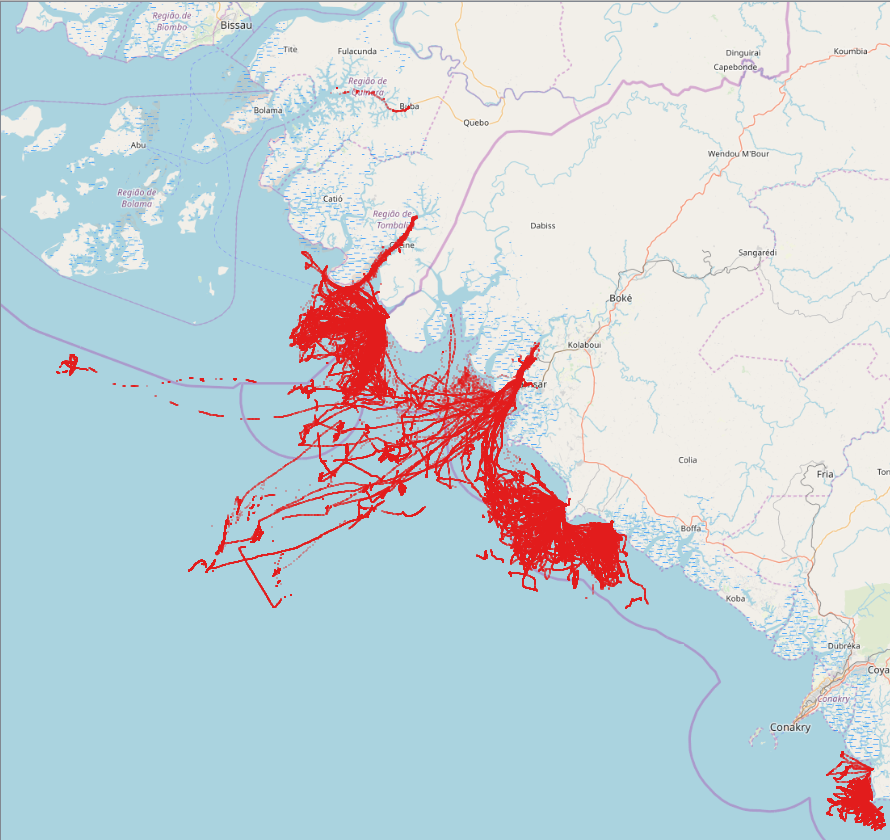 For this activity, we also had the chance to collaborate with our Gambian colleagues through agreement with CRODT. This collaboration should go forward during stock assessment working groups.
For this activity, we also had the chance to collaborate with our Gambian colleagues through agreement with CRODT. This collaboration should go forward during stock assessment working groups.
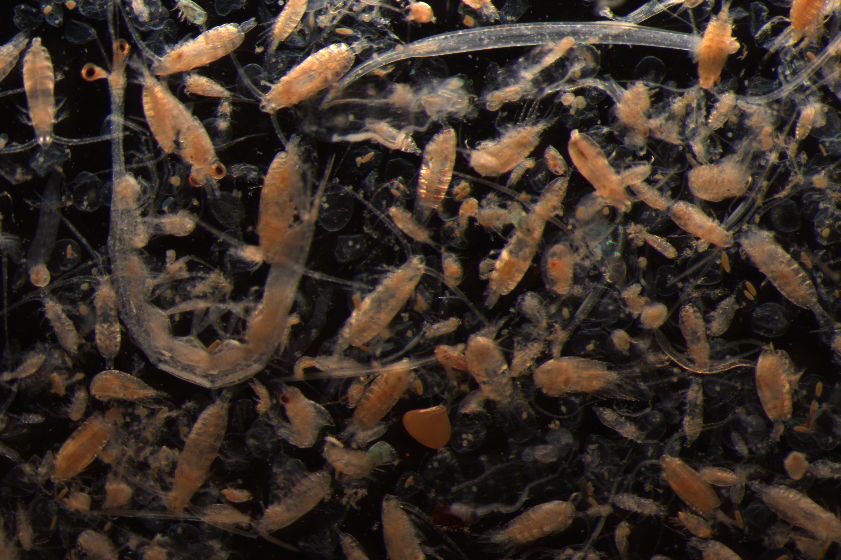 Trophic interaction (WP4) : During 2019, Priscilla Licandro (SZN), in collaboration with IMROP and CNSHB included plankton and jellyfish data collection within national scientific surveys. These samples will be analysed by Priscilla at SZN in order to complete trophic analysis on both ecosystems.
Trophic interaction (WP4) : During 2019, Priscilla Licandro (SZN), in collaboration with IMROP and CNSHB included plankton and jellyfish data collection within national scientific surveys. These samples will be analysed by Priscilla at SZN in order to complete trophic analysis on both ecosystems.


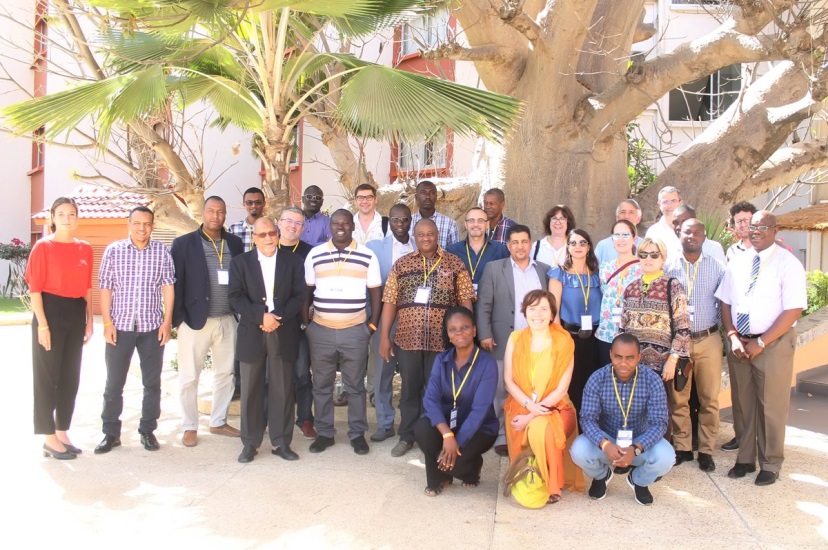 During this first year, we have met together in March during the kick of meeting in Saly (Senegal). During this meeting, we have detailed planned activities within our project. We have shared this overview with regional fisheries commissions (SRFC and FCWC) and regional institutions (ECOWAS and UEMOA). We also met representatives of other selected project under the PESCAO Call of tender: GREPPAO leaded by Pierre Failler from the University of Portsmouth and FAO colleagues.
During this first year, we have met together in March during the kick of meeting in Saly (Senegal). During this meeting, we have detailed planned activities within our project. We have shared this overview with regional fisheries commissions (SRFC and FCWC) and regional institutions (ECOWAS and UEMOA). We also met representatives of other selected project under the PESCAO Call of tender: GREPPAO leaded by Pierre Failler from the University of Portsmouth and FAO colleagues.
Within the Work package 3 of DEMERSTEM, a small-scale fisheries monitoring system using GPS was implemented in Guinea and Bissau Guinea. . 20 GPS have been deployed on Canoe landing in Kamsar and Katcheck port in Guinea and Cacine in Bissau Guinea. A data collection protocol was also implemented to collect landings data on GPS monitored pirogues. Mohamed Soumah, from CNSHB, has leaded this activity with trainings in both countries (for CNSHB and CIPA colleagues in charge of the survey). Mohamed carried out a second mission in Bissau to control and adapt the protocol.
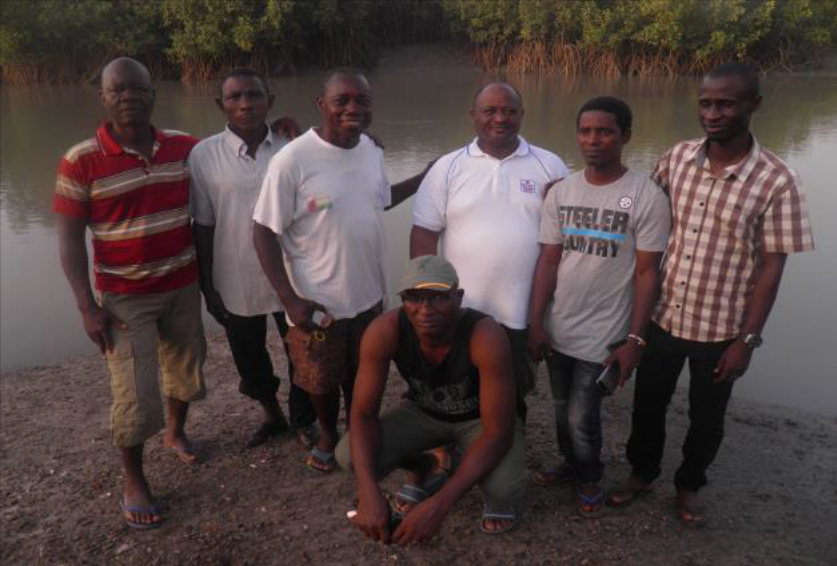 In April, Jérôme Guitton was in Ghana for the FAO/PESCAO kick off meeting to present DEMESTEM acivities and to try promoting synergies between DEMERSTEM and FAO project. (Ghana 24-27th April 2019)
In April, Jérôme Guitton was in Ghana for the FAO/PESCAO kick off meeting to present DEMESTEM acivities and to try promoting synergies between DEMERSTEM and FAO project. (Ghana 24-27th April 2019)
Modou Thiaw carried out a mission to Guinea in order to learn about GPS data collection implemented by Mohamed Soumah. CRODT wanted to implement a similar protocol for Kayar smal scales fisheries. Mohamed carried a mission in France (22th of June to 6th of July) to work mainly with Jerome Guitton to develop a suitable database for GPS and survey data collection. We also worked with Marie Pierre Etienne (Agrocampus Ouest) and Nicolas Bez (IRD) on data analysis. GPS trajectories are analysed to calculate and spatialized effort of pirogues. Following this mission an onboard fishing activities monitoring was carried out in order to feed learnings algorithms.
Within the work package 4 on Ecosystem Approach, and during regular scientific trawl survey, CNSHB carried out a specific jellyfish and plankton survey.
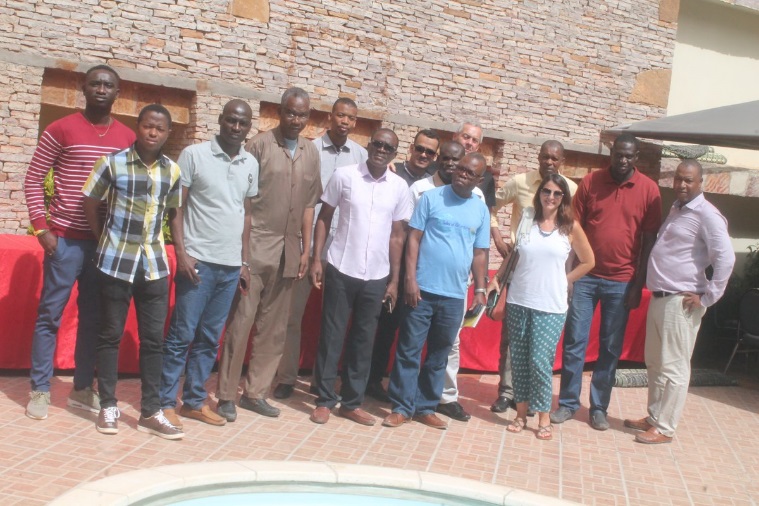 For the stock identification activity (WP1) a working group was organized to share, train and promote a biological data collection (From 27th to 30th of August - Nouakchott) . This workshop was leaded by our IEO partners (Thanks to Eva Garcia Isarch and José F. Gonzalez Jiménez) and co-organized with IMROP (Thanks to Beyah). This meeting was the starting point for the biological data collection that will be carried out during one year. The main objective is to collect data for a better spatial definition of stocks selected within the DEMERSTEM project.
For the stock identification activity (WP1) a working group was organized to share, train and promote a biological data collection (From 27th to 30th of August - Nouakchott) . This workshop was leaded by our IEO partners (Thanks to Eva Garcia Isarch and José F. Gonzalez Jiménez) and co-organized with IMROP (Thanks to Beyah). This meeting was the starting point for the biological data collection that will be carried out during one year. The main objective is to collect data for a better spatial definition of stocks selected within the DEMERSTEM project.
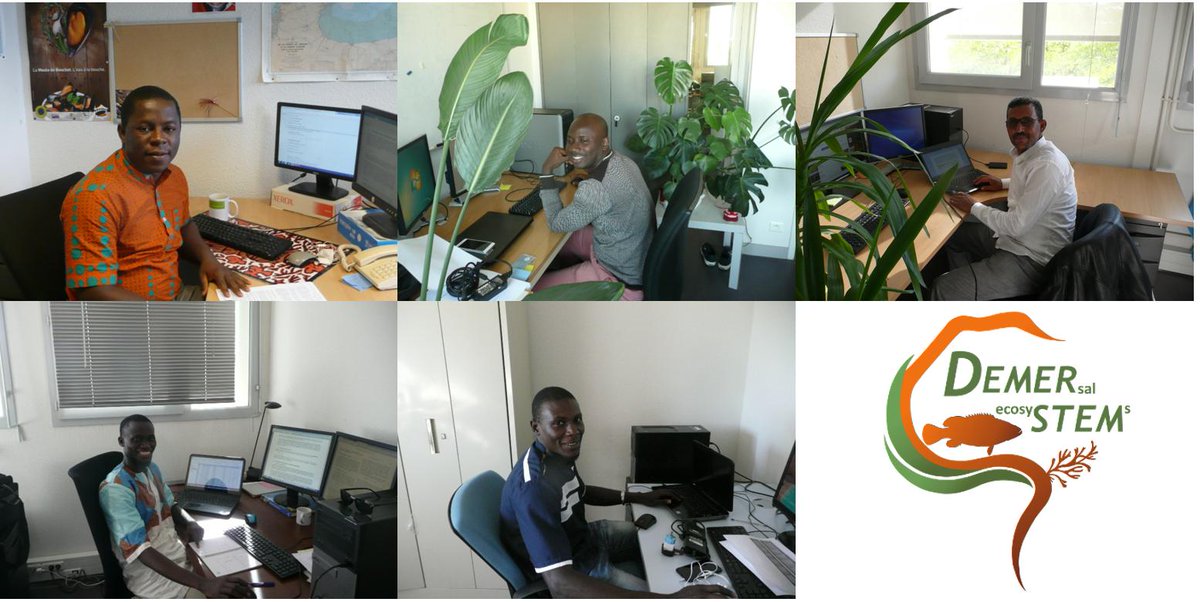 We initially planned 4 scientists for the long training period in Europe within the DEMERSTEM framework. Finally, 5 Phd candidates were selected and were invited to come to France. They arrived in September for a 3.5-month period. They shared their time between courses of the Fisheries and Aquaculture Master of Agrocampus and the main core of their case study subject. One main objective of these periods is to create synergies between DEMERSTEM partners and interaction with their AGrocampus Co-supervisor (Didier Gascuel for stock assessment case studies and Olivier Le Pape for sensitive habitat subjects). Ato Ekuban from Ghana (Fisheries division) has also been with us for two months, mainly to learn French but also to interact with Ivory Coast scientist on the sensitive habitats assessment of Ghana/Ivory Coast Area.
We initially planned 4 scientists for the long training period in Europe within the DEMERSTEM framework. Finally, 5 Phd candidates were selected and were invited to come to France. They arrived in September for a 3.5-month period. They shared their time between courses of the Fisheries and Aquaculture Master of Agrocampus and the main core of their case study subject. One main objective of these periods is to create synergies between DEMERSTEM partners and interaction with their AGrocampus Co-supervisor (Didier Gascuel for stock assessment case studies and Olivier Le Pape for sensitive habitat subjects). Ato Ekuban from Ghana (Fisheries division) has also been with us for two months, mainly to learn French but also to interact with Ivory Coast scientist on the sensitive habitats assessment of Ghana/Ivory Coast Area.
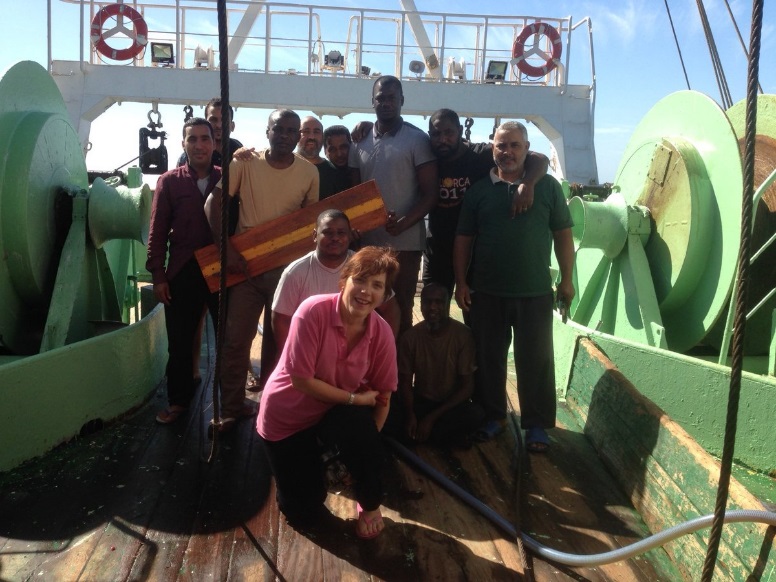 Priscilla Licandro from SZN was on board of the Mauritanian Scientific Vessel (El Awam). Her objective was to implement jellyfish and plankton data collection within the Ecosystem work package (WP4).
Priscilla Licandro from SZN was on board of the Mauritanian Scientific Vessel (El Awam). Her objective was to implement jellyfish and plankton data collection within the Ecosystem work package (WP4).
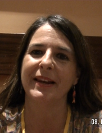
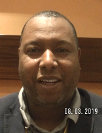
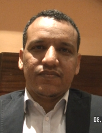
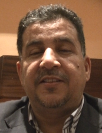
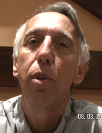
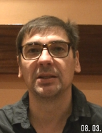
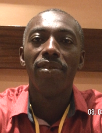
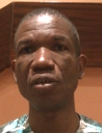

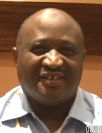

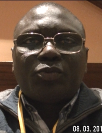
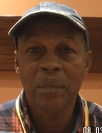



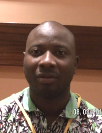

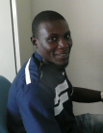
During DemerstEm project, we plan to set up a Regional Database of Scientific trawling survey. We have been inspired by the PRESH project developped by
UEMOA. Data availability is often an issue for producing a shared input for stocks assessment models. This regional Database, and the tools we can develop to easily access and use it,
will improve the use of these costly data in the scientific advice process. Depending on the data policy, we will be able to plug the database to the stock assessment models.
We propose to encourage this data gathering developping ad on services as :
We will focus on Stock identity of Case study selected species. We will use complementary approach and methodologies :
Once the data are collected and the stock identity defined, we can start the stock assessment process.
Several methods will be applied regarding the availability of data. We first plan to generalized methods used by Meissa et al 2017.
Then, partners will evaluate alternatives of complementary apprpriate methods to the life history traits of the species (ie : ad hoc methods for short living species) or to the data limited status of the stocks
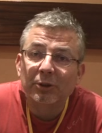



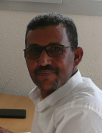
The renewal of exploited marines ressources is a result of a good level of spawning biomass but also a result of the quality of habitats from wich stocks are highly dependent during part of their life
cycle. Population dynamic of marine living species is very specific comparing to terrestrial species as it's a mix bettween high variabliity of fecondity, survival and high dependency to environnmental conditions.
High survival variability makes this ressources highly dependent of the quality of succesives habitats used during their life cycle.
In particular, renewal of fish stocks is highly dependant of nurseries habitat, located in coastal area for a large proportion of exploited ressources.
During breeding season, adults concentration on spawing ground is high. However these spawing grounds is not especially located in coastal area.
Indeed, fisheries management does not have to only focus on fishing effort and catches control but should also take care of sensitives areas.
Coastal area degradation due to fisheries but also due to other human activities can explain decrease of fish biomass.
Sensitive area reduction or decrease of their quality can affect recruitment and fish population size. However our needed knowledge to 1) identify sensitive area necessary to renewal fish population 2) to quantify
benefit of area protection against human activities is really yet poor, especially in west african countries.
It is why the main objective of this wp is to collect data and available information that can help us to identify nurseries or spawing grounds and to use these data as input of models to produce quantitatives maps of sensitive habitats.
List of planned actions :
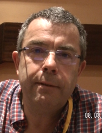




One issue in the stock assessment process is often to obtain data on small scale fisheries, especially in coastal area. This is a challenge for us to help data collection on fisheries that rely to the sensistive habitat defined in WP2.
We suggest to use GPS logger ant pathway analysis to obtain more precise view of effort due to small scale fisheries in sensisitive habitat.
If data are available we could make a similiar analysis using VMS data for industrial fisheries and maybe for spawing area .




DemerstEm project aims to improve monospecific assessment, howerever, fisheries scientists are aware of this approach limitations. Taking into account the global ecosystem, with trophic interactions is needed;
That will be done studying trophic interactions between groups of prey and predators as a description of the Ecosystem..
Moreover Global change is also impacting west african marine ecosystem with some modification in the trophic chain.These altered trophic interaction will modify stocks productivity.
Recent changes seems to be good for jellyfish profileration that will impact negativly demersal species as they are predators for fish eggs and larvaes and competitors for juveniles food.
We suggets 4 approachs to take into account the complexity of the Demersal Ecosystem to improve our knowledge on impact due to coastal Ecosystems changes on the variability of exploited stock biomass.
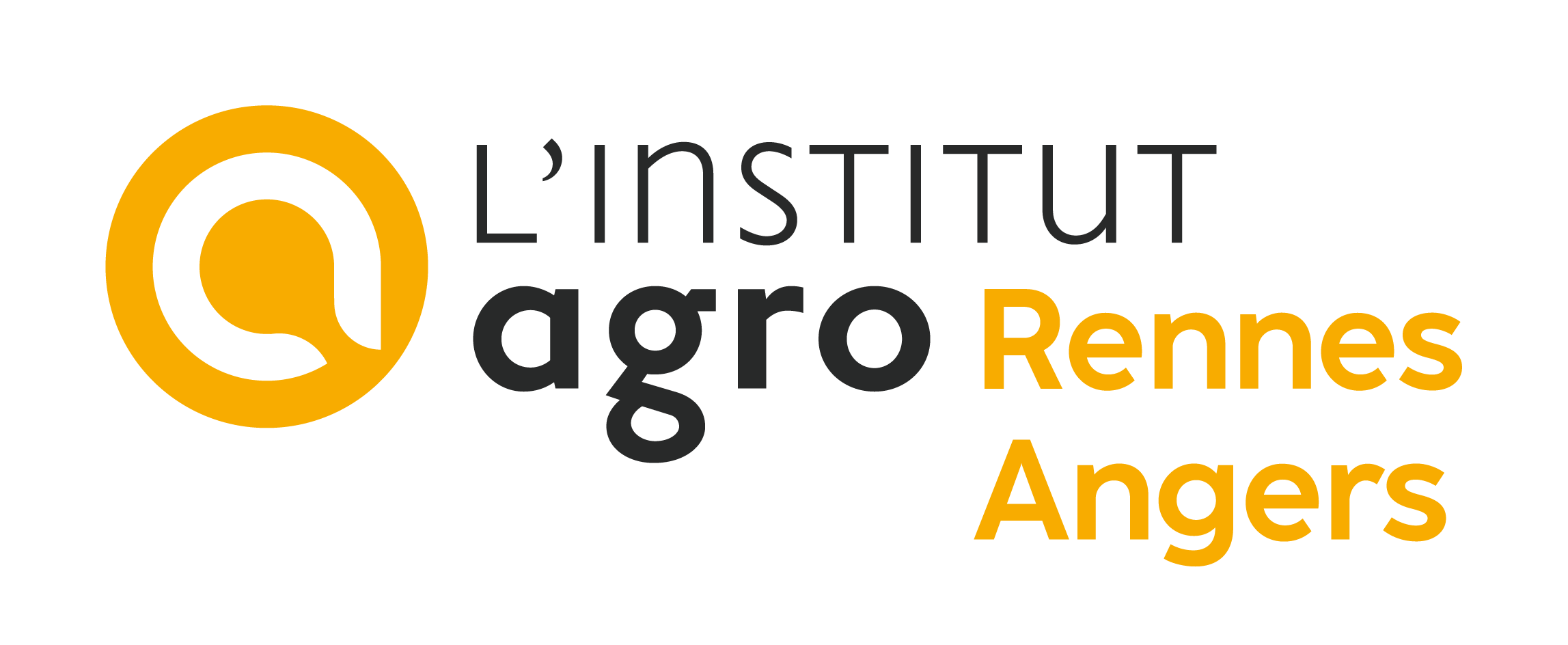









More than 30 scientists of these instututions are involved in DemerstEm

























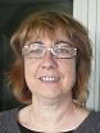
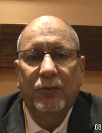
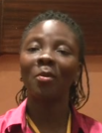
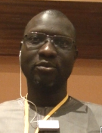
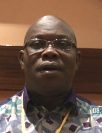
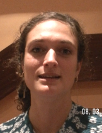
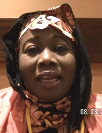
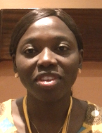
 Click here to list files )
Click here to list files )
 photos
photos rapports
rapports présentations
présentations rapports
rapports présentations
présentations rapports
rapports presentations
presentations posters
posters presentations
presentations